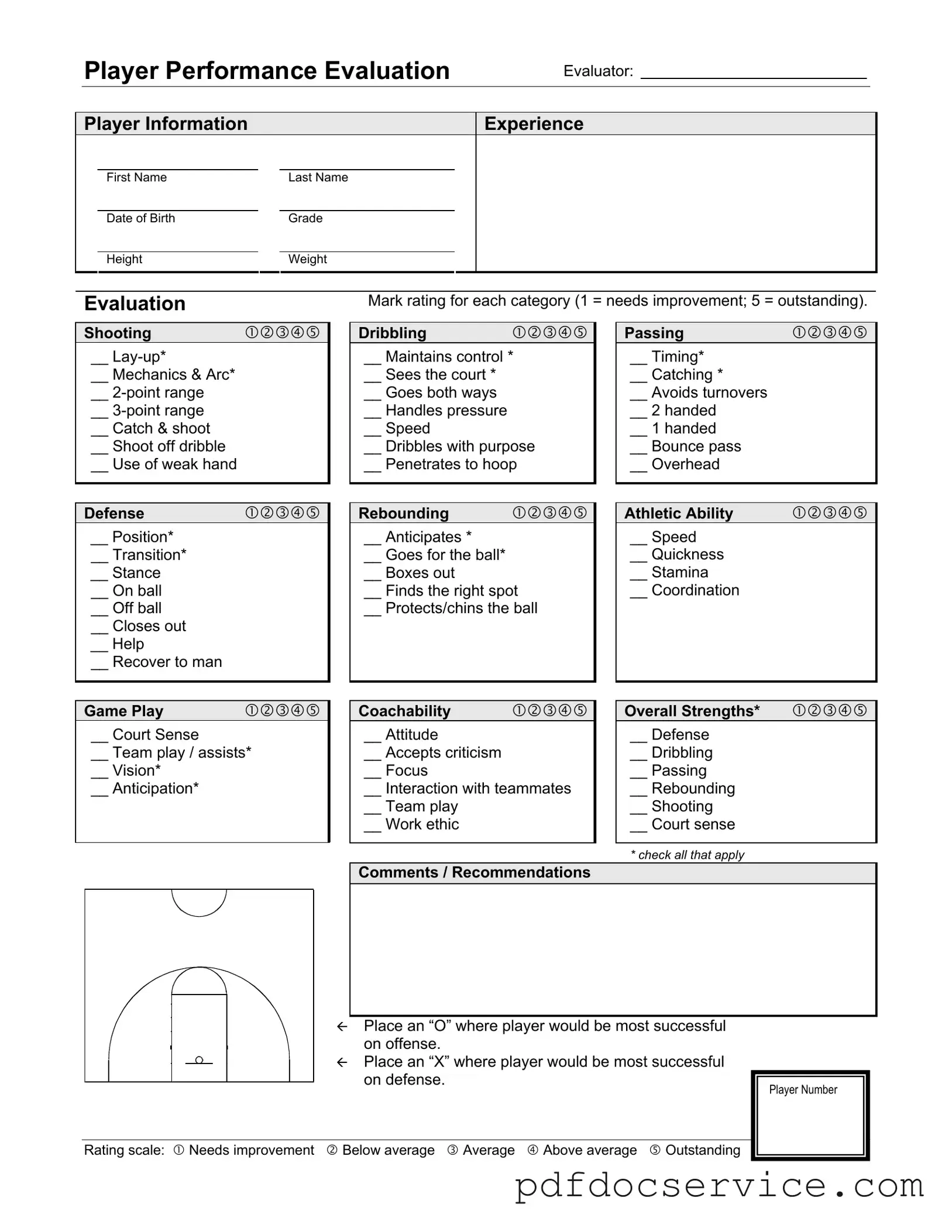The Basketball Evaluation Form serves as a comprehensive tool to assess a player's skills and abilities across various categories. It helps coaches and evaluators identify strengths and areas for improvement, ensuring that each player receives tailored feedback to enhance their performance on the court.
The form is typically filled out by coaches or evaluators who have observed the player during practices or games. Their insights are crucial, as they can provide an objective assessment of the player's skills and overall performance.
What categories are included in the evaluation?
The evaluation covers several key categories, including:
-
Shooting
-
Defense
-
Dribbling
-
Rebounding
-
Passing
-
Athletic Ability
-
Game Play
-
Coachability
Each category is further broken down into specific skills, allowing for a detailed analysis of the player's performance.
Players are rated on a scale from 1 to 5 for each skill, where 1 indicates a need for improvement and 5 signifies outstanding performance. This rating system provides a clear and concise way to evaluate a player's abilities across different areas.
The "O" and "X" symbols are used to indicate the player's strengths in offensive and defensive roles, respectively. An "O" marks where the player is most successful on offense, while an "X" shows where they excel defensively. This visual representation helps coaches quickly identify the player's best positions on the court.
Yes, the Basketball Evaluation Form is designed to be versatile and can be utilized for players of various age groups. While the specific skills assessed may vary depending on the player's level, the overall structure remains applicable across different ages and skill levels.
The comments or recommendations section allows evaluators to provide personalized feedback about the player's performance. Suggestions for improvement, observations about the player's attitude, and notes on their teamwork can be included. This section is vital for guiding the player’s development and addressing any specific areas needing attention.
How often should evaluations be conducted?
Evaluations should ideally be conducted regularly, such as at the beginning and end of each season or during key points throughout the season. Frequent assessments allow coaches to track a player's progress over time and adjust training strategies as needed.
While the evaluation form has a structured layout, there is flexibility in how comments and ratings are provided. Evaluators should ensure that they are thorough and clear in their assessments, using the designated rating scale and providing constructive feedback wherever possible.
What happens after the evaluation is completed?
Once the evaluation is completed, it should be reviewed with the player. This discussion is essential for helping the player understand their strengths and areas for improvement. It also fosters open communication between the coach and the player, enhancing the overall development process.
